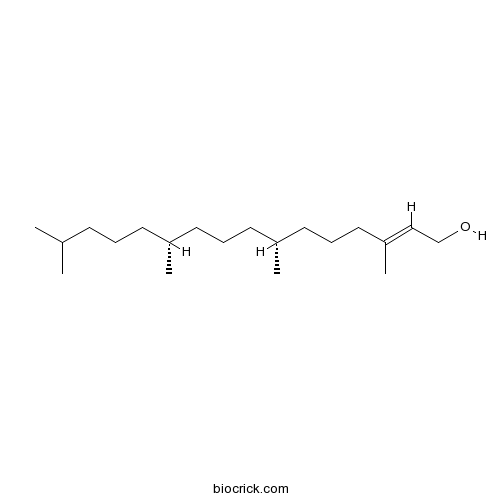Impatiens noli-tangere
Impatiens noli-tangere
1. The products in our compound library are selected from thousands of unique natural products; 2. It has the characteristics of diverse structure, diverse sources and wide coverage of activities; 3. Provide information on the activity of products from major journals, patents and research reports around the world, providing theoretical direction and research basis for further research and screening; 4. Free combination according to the type, source, target and disease of natural product; 5. The compound powder is placed in a covered tube and then discharged into a 10 x 10 cryostat; 6. Transport in ice pack or dry ice pack. Please store it at -20 °C as soon as possible after receiving the product, and use it as soon as possible after opening.
Natural products/compounds from Impatiens noli-tangere
- Cat.No. Product Name CAS Number COA
-
BCN1673
Phytol150-86-7
Instructions

Demonstration of pollinator-mediated competition between two native Impatiens species, Impatiens noli-tangere and I. textori (Balsaminaceae).[Pubmed: 25859332]
Plant-plant interspecific competition via pollinators occurs when the flowering seasons of two or more plant species overlap and the pollinator fauna is shared. Negative sexual interactions between species (reproductive interference) through improper heterospecific pollen transfer have recently been reported between native and invasive species demonstrating pollination-driven competition. We focused on two native Impatiens species (I. noli-tangere and I. textori) found in Japan and examined whether pollinator-mediated plant competition occurs between them. We demonstrate that I. noli-tangere and I. textori share the same pollination niche (i.e., flowering season, pollinator fauna, and position of pollen on the pollinator's body). In addition, heterospecific pollen grains were deposited on most stigmas of both I. noli-tangere and I. textori flowers that were situated within 2 m of flowers of the other species resulting in depressed fruit set. Further, by hand-pollination experiments, we show that when as few as 10% of the pollen grains are heterospecific, fruit set is decreased to less than half in both species. These results show that intensive pollinator-mediated competition occurs between I. noli-tangere and I. textori. This study suggests that intensive pollinator-mediated competition occurs in the wild even when interacting species are both native and not invasive.
Inhibitory potential of naphthoquinones leached from leaves and exuded from roots of the invasive plant Impatiens glandulifera.[Pubmed: 24722883]
Exploring the effects of allelopathic plant chemicals on the growth of native vegetation is essential to understand their ecological roles and importance in exotic plant invasion. Naphthoquinones have been identified as potential growth inhibitors produced by Impatiens glandulifera, an exotic annual plant that recently invaded temperate forests in Europe. However, naphthoquinone release and inhibitory potential have not been examined. We quantified the naphthoquinone content in cotyledons, leaves, stems, and roots from plants of different ages of both the invasive I. glandulifera and native Impatiens noli-tangere as well as in soil extracts and rainwater rinsed from leaves of either plant species by using ultra-high pressure liquid chromatography-mass spectrometry (UHPLC-MS). We identified the compound 2-methoxy-1,4-naphthoquinone (2-MNQ) exclusively in plant organs of I. glandulifera, in resin bags buried into the soil of patches invaded by I. glandulifera, and in rainwater rinsed from its leaves. This indicates that 2-MNQ is released from the roots of I. glandulifera and leached from its leaves by rain. Specific bioassays using aqueous shoot and root extracts revealed a strong inhibitory effect on the germination of two native forest herbs and on the mycelium growth of three ectomycorrhiza fungi. These findings suggest that the release of 2-MNQ may contribute to the invasion success of I. glandulifera and support the novel weapons hypothesis.


